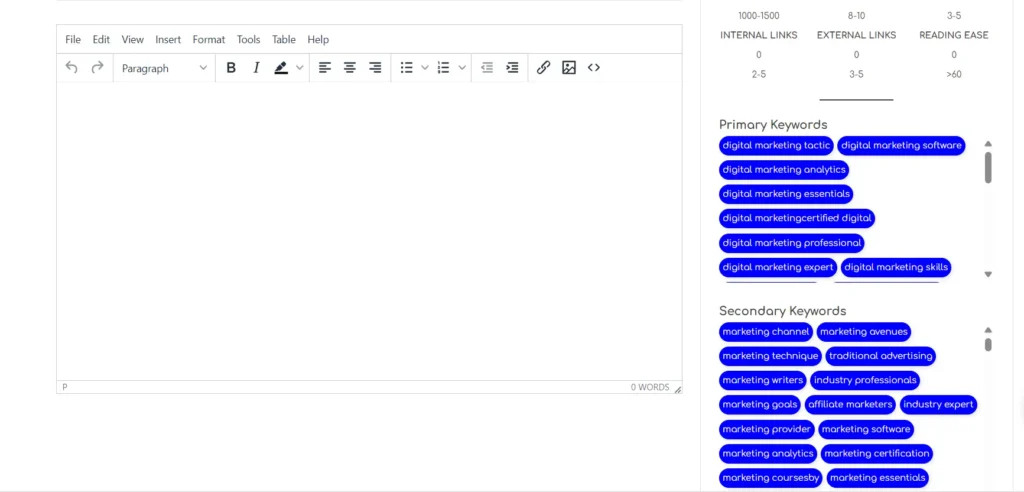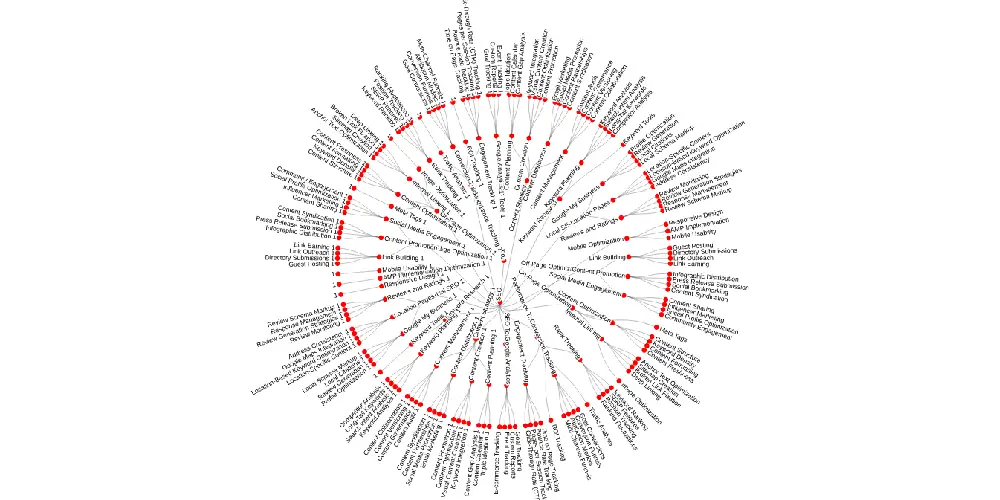Last Updated on September 19, 2025
SEO content optimization is the key to ensuring your valuable content reaches its intended audience via search engine. Think of it as building a bridge between your content and the people searching for it.
When users type queries into search engines, they’re looking for specific answers or solutions. By aligning your content with this search intent, you’re not just improving your visibility in search results; you’re providing real value to your audience. This alignment is what separates successful content from the millions of pages that never get discovered.
Consider this: 75% of users never scroll past the first page of search results. This means if your content isn’t optimized for SEO, you’re potentially missing out on thousands of visitors who could benefit from your expertise. Having well-optimized content isn’t just about rankings – it’s about connecting with people who need your information, products, or services.
Understanding SEO Content Optimization
SEO content optimization is the art and science of creating content that both search engines and humans love. At its core, it’s about making your content easily understandable and accessible to search engines while ensuring it provides value to your readers.
Think of search engines as librarians trying to organize millions of books. They need clear signals to understand what your content is about and who it’s for. These signals include:
- Keywords: The terms and phrases your target audience uses
- Content relevance: How well your content matches user intent
- User experience: How easily readers can navigate and consume your content
Good optimization doesn’t mean stuffing your content with keywords. Instead, it’s about creating comprehensive, well-structured content that naturally incorporates relevant terms while answering users’ questions effectively.
When done right, SEO optimization helps search engines understand your content’s context and value, leading to better rankings and more visibility for your target audience.
1. Keyword Research Strategies
Effective keyword research is the foundation of SEO content optimization – you’re uncovering the exact terms and phrases your target audience uses to find information. This process starts with understanding your core topics and expands into discovering related terms, questions, and variations that people actually search for. Using tools like Google Keyword Planner, Ahrefs, SEMrush or SEO Content Optimization Tool you can identify keywords with the right balance of search volume and competition level. The key is to look beyond just primary keywords and consider long-tail variations, semantic relationships, and user intent behind the searches. Remember, it’s not just about finding high-volume keywords; it’s about finding the right keywords that align with your content goals and audience needs. Here’s how to build a solid keyword strategy:
Finding Primary and Secondary Keywords via Natural Language Processing (NLP)
Start with seed keywords related to your topic :
Go to SEO Content Optimization Tool and enter keyword/search query and region you want to rank in and hit on keyword research button. It will start crawling google search results in given particular region.

After crawling top google results, it will start analyzing all possible 1 gram, 2 gram and 3 gram keywords from those top URLs:

Once it will complete NLP processing, then it will display primary and secondary keywords-

LSI Keywords Integration
Latent Semantic Indexing (LSI) keywords are terms semantically related to your main topic. For example, if writing about “coffee brewing,” include terms like: Coffee grinders, Water temperature, Brewing methods, Bean roasting, Filter types etc
Keyword Placement Best Practices
- Include your main keyword in the first 100-150 words
- Use keywords naturally in headings (H2-H6)
- Place keywords in image alt text when relevant
- Include variations in meta descriptions and title tags
- Maintain a keyword density of 1-2%
Remember: Focus on topics rather than just keywords. This approach helps you create comprehensive content that naturally includes relevant terms.
2. Crafting User-Friendly, Optimized Content
Creating user-friendly, optimized content is like building a well-designed house – it needs a solid structure, good flow, and attention to detail. Your content should be easily scannable with short paragraphs, clear headings, and strategic use of bullet points and formatting. Using proper heading hierarchy (H1-H6) not only helps search engines understand your content structure but also makes it easier for readers to navigate through your information. The key is to maintain a natural writing style while incorporating your target keywords in a way that doesn’t disrupt the reading experience. Think of it as weaving keywords into your content like threads in a fabric – they should blend in seamlessly rather than stick out awkwardly.
Readability Tips
- Keep paragraphs short (3-4 lines)
- Use bullet points and numbered lists
- Include descriptive subheadings
- Break up text with relevant images
- Use transition words to improve flow
Content Structure
- Start with a clear introduction
- Use H2-H6 tags logically
- Include relevant examples
- End with a strong conclusion
- Add a call-to-action
Avoiding Keyword Stuffing
Instead of forcing keywords, focus on:
- Writing naturally for your audience
- Using synonyms and variations
- Creating comprehensive content
- Answering related questions
- Maintaining a conversational tone
If you are using SEO Content Optimization Tool, it will guide you on best SEO practices and accordingly show SEO score(out of 100) on your content. This tools analyze your content and provide actionable recommendations to improve its visibility in search engine results pages (SERPs). Aim for an SEO score between 70-80 to ensure your content adheres to best SEO practices. It will give SEO score based on relevant NLP keywords in body and headings , keyword count, headings count , images count, internal links , external links, reading ease and other parameters.

3. Incorporating Multimedia
Multimedia elements can significantly enhance your content’s engagement and SEO value. Adding multimedia elements to your content is like adding spices to a dish – it enhances the overall experience and keeps your audience engaged. High-quality images, infographics, videos, and interactive elements can break up text-heavy content and provide additional value to your readers. When optimizing multimedia elements, ensure they’re properly compressed to maintain fast loading times, include descriptive alt tags for accessibility and SEO, and relate directly to your content. Just as a well-placed image can illustrate a complex concept better than paragraphs of text, strategic use of multimedia can significantly improve user engagement, time on page, and overall content effectiveness. Here’s how to use them effectively:
Benefits of Multimedia
- Increases time on page
- Improves user engagement
- Breaks up text content
- Explains complex concepts
- Provides sharing opportunities
Image Optimization Tips
- Compress images without losing quality
- Use descriptive file names
- Add relevant alt text
- Choose appropriate file formats
- Maintain mobile responsiveness
4. Leveraging Internal and External Links
Think of internal and external linking as creating a web of connections that strengthens your content’s authority and usefulness. Internal links help readers discover related content on your site, improving navigation and keeping them engaged with your content ecosystem. External links to authoritative sources add credibility to your content and show search engines that you’re providing comprehensive value to readers. When implementing links, focus on using natural anchor text that gives readers a clear idea of what they’ll find when they click. This interconnected approach not only helps with SEO but also provides a better user experience by offering additional relevant resources and information. Here’s how to implement an effective linking strategy:
Internal Linking
- Connect related content
- Build topic clusters
- Improve site navigation
- Distribute page authority
- Guide users through your site
External Linking
- Link to authoritative sources
- Support claims with data
- Add value for readers
- Build credibility
- Use relevant anchor text
Remember to regularly check for broken links and update them to maintain your content’s value and user experience.
5. Tracking and Improving Performance
Monitoring your content’s performance is like having a dashboard that shows you what’s working and what needs improvement. By regularly checking metrics like organic traffic, bounce rate, time on page, and conversion rates in tools like Google Analytics and Search Console, you can make data-driven decisions about your content strategy. This ongoing analysis helps you identify patterns, understand user behavior, and optimize your content for better results. Remember to look beyond just traffic numbers – focus on engagement metrics that indicate whether your content is truly meeting user needs and achieving your goals. Regular monitoring and tweaking based on performance data is crucial for long-term SEO success.

Key Metrics to Track
- Organic traffic
- Time on page
- Bounce rate
- Conversion rates
- Search rankings
Optimization Tips
- Review underperforming content
- Update outdated information
- Improve title tags and meta descriptions
- Enhance content depth
- Test different CTAs
Use tools like Google Analytics and Search Console to gather data and make informed optimization decisions.
Conclusion
Success in SEO content optimization comes from consistent application of best practices and a willingness to adapt to changing trends and user needs. Start by implementing these strategies one step at a time, focusing first on optimizing your most important content. Keep testing new strategies, measuring results, and adjusting your tactics based on what works best for your specific audience and goals. The key is to maintain a balance between search engine optimization and creating valuable, engaging content that serves your readers’ needs.
Remember, the goal is to create content that serves both search engines and users. Start optimizing your content today, and you’ll see improved visibility and engagement over time.
- Best SEO Content Optimization Tools - November 13, 2025
- People Also Search For (PASF): The Complete 2025 Guide to Smarter SEO Optimization - November 11, 2025
- Content Pruning: A Detailed Guide to Improve SEO - October 17, 2025




